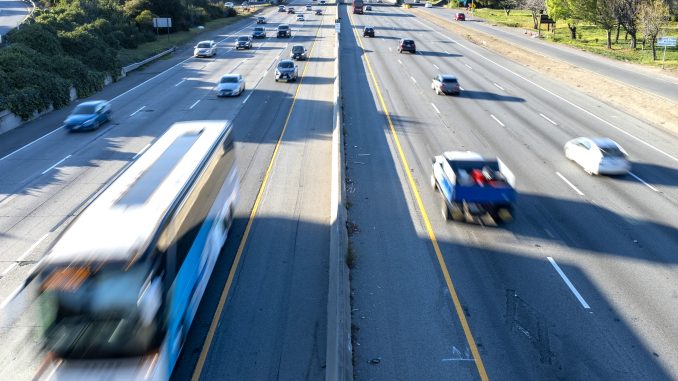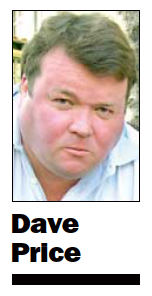
OPINION
BY DAVE PRICE
Daily Post Editor
If there’s a bright side to the coronavirus stay-at-home order, it’s the empty freeways.
For years the public has been debating how to deal with increasing traffic on our roads. Most of the things local governments tried didn’t work. Carpool lanes, ramp metering, more mass transit. None of it reduced traffic.
And every year it seemed, there was another tax on the ballot to improve transportation. Residents, frustrated with traffic congestion, passed nearly all of the taxes. But these taxes never produced the relief the government promised even though the sales tax is 9%.
Now, finally, we have a solution. A solution we stumbled upon by accident.
The solution is to have those who can work from home do so. Not everyone will like it. Many people want the social atmosphere of the office and the ability to collaborate with colleagues who are at arm’s reach.
Not for everybody
And not everybody can work from home. They have duties that require them to go to work, like the techs who work in the server room.
 But I think this crisis shows that most people employed by the tech industry can work from home.
But I think this crisis shows that most people employed by the tech industry can work from home.
I don’t know if working from home would have been possible 10 years ago. Video conferencing was in its infancy back then. The connections were poor and unprofessional. Also, back then people kept their work on their PCs. Now we put everything in the cloud, making it easier to access needed materials from home.
And working from home gives people more flexibility when it comes to caring for children or other family members. It’s a crisis when your job is 20 miles from home and you discover at work that you’ve got an emergency at home involving your kid.
We need to do away with regular office time — the concept that you must be in the office from 9 to 5 every weekday. That’s why the morning and evening commutes were so difficult.
Maybe in-person meetings only need to happen once a week?
Or maybe large employers could have shifts, with the A group working in the office on Mondays and Wednesdays, while the B group works there on Tuesdays and Thursdays.
Measure workers by goals
We need managers to let go and trust that their employees are really working. And instead of checking to see when people arrive and leave the office, focus more on job performance and reaching goals. Perhaps the lesson here is that a 21st century information-age office doesn’t have to be run like a 19th century industrial factory.
• • •
The long and short of it
An unintended consequence of Gov. Gavin Newsom’s shutdown order is that it closed barber shops and hair salons. How long can people survive without a haircut? What about people who dye their hair? Who wants to take the risk of cutting their own hair, or having an inexperienced friend or relative cut it? All I know is the day society re-opens, there’s going to be a long line at the barber shop.
• • •
They’re not on your side
The deadline for residents in Santa Clara County to pay property taxes came and went on Friday. And while other counties, such as San Mateo, had the good sense to postpone the deadline because of the economic crash, Santa Clara County decided its residents don’t deserve a break.
When you write those big property tax checks twice a year, 44% goes to your school district. The county government gets 12%, cities get 10% and community colleges get 7%. The list of the remaining taxing agencies is pretty long.
I didn’t hear any elected official whose agency receives property taxes call for extending the deadline. The Palo Alto school board was dead silent. So was the Palo Alto City Council. And the Foothill-De Anza Community College District Board, which just got a $898 million bond issue approved by voters last month, showed no gratefulness.
The people in these government agencies had a choice. They could have been on your side, but they weren’t.
If you’re unhappy they couldn’t show any mercy, you can make your voice heard a couple of ways.
First, when an incumbent on any of these boards runs for re-election, you can ask them why they were silent on extending the tax deadline.
Second, the next time a school district, city or any other property-tax funded agency puts a tax on the ballot, you can vote it down. They weren’t generous toward you when it mattered, so why should you be generous with them?
Editor Dave Price’s column appears on Mondays. His email address is [email protected].



Hi Dave. Are you working from home? If so will you be closing you offices and allow everyone to work from home?
Thanks for asking. The newspaper is considered an “essential business” under the state order, so it is staying open. I do most of my work from home, but I come into the office to supervise production of the paper in the evenings. That’s been my schedule for many years. Before the crisis, three of our five reporters worked from home. Now they all do.
I enjoy working from home and staying close to my family. I realize it’s not for everyone, though. How about you “Boho”?
Dear Dave,
I want to completely support your words about tele-commuting, and take it further – to include non-work meetings by zoom/skype/etc.
As you wrote, this CANNOT be “for everybody”. Of course, that’s true. But we are all witnessing the many benefits, without, i think, there being too many drawbacks.
Traffic congestion isn’t the only reason to wish that the work-from-home phenomena becomes permanent. You mentioned flexibility with child/elder care, and there’s also bicycle safety, noise pollution, plus possible rent reductions.
To me, the biggest positive on the checklist is pollution reduction. How much less airborne-effluent has come out of our vehicle exhaust pipes in the past 6 weeks?
Our current horrendous covid-19 crisis is a cruel killer. My heart goes out to the so many who have lost their health, or income, (like my siblings).
Nevertheless, we can’t pretend we don’t like clean air.
As of 2019, local air pollution, world-wide, is responsible for 7 to 9 million deaths annually; the UN’s IPCC has predicted hundreds of millions of deaths before this century is out – from pollution-related changes in the weather climate.
“The solution is to have those who can work from home do so.” Absolutely right!
“We need to do away with regular office time”. “A 21st century information-age office doesn’t have to be run like a 19th century industrial factory.” Let’s make it happen!
If we’ve achieved an 80% (?) reduction in pollution in Palo Alto, and if it’s become “normal” to work from home, or to attend council meetings remotely, or get tutoring lessons via skype or zoom, WHY GO BACK?
Thanks much,
David Page
Co-Chair of 350SV – Palo Alto team